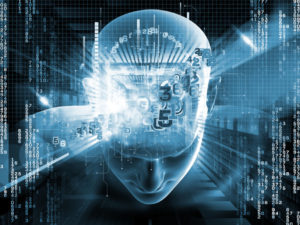 Artificial Intelligence and related terms such as Cognitive computing, Data Science, Robotics, Predictive Analysis, Machine Learning etc. have been drawing attention over the past few years of almost all institutions and not limiting to only business, technical or academics. AI application has become one of the strongest disruptive forces in digital transformation along with SMAC, IoT, Cyber security and gamification. Academic institutions have been revising the syllabus to put relevant focus of AI. Industries have been giving proper attention in optimizing platform in this area (such as IBM Watson, MS Azure ML platform) .Gartner pitches Data Science as the sexiest job for 21st century that excites professionals from all walks of life to learn and make a lateral shift in his/her career. AI has become a much sought after profession as well as rewarding area in digital transformation journey.I have picked this topic to share my thought and experience to highlight concepts, facts and terminologies, applications, advantages and learning steps in an easy manner to help business & technologist to appreciate this ecosystem and apply the same appropriately.
Artificial Intelligence and related terms such as Cognitive computing, Data Science, Robotics, Predictive Analysis, Machine Learning etc. have been drawing attention over the past few years of almost all institutions and not limiting to only business, technical or academics. AI application has become one of the strongest disruptive forces in digital transformation along with SMAC, IoT, Cyber security and gamification. Academic institutions have been revising the syllabus to put relevant focus of AI. Industries have been giving proper attention in optimizing platform in this area (such as IBM Watson, MS Azure ML platform) .Gartner pitches Data Science as the sexiest job for 21st century that excites professionals from all walks of life to learn and make a lateral shift in his/her career. AI has become a much sought after profession as well as rewarding area in digital transformation journey.I have picked this topic to share my thought and experience to highlight concepts, facts and terminologies, applications, advantages and learning steps in an easy manner to help business & technologist to appreciate this ecosystem and apply the same appropriately.
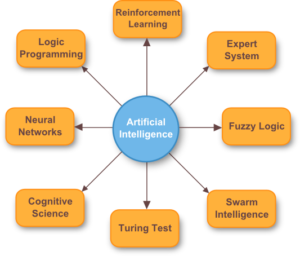 What is AI: Artificial Intelligence is a discipline within computer science that deals in creating computer/machine as intelligent as human beings. Products of AI can vary from low intelligent to super intelligent systems in the form of automation scripts (as the minimum) to robots with high degree of intelligence that can qualify as decision support system (DSS). AI product is the result of application of concepts from diverse subject area such as Neuron science, math, biology, sociology, philosophy, psychology and many more to the computer technology depending upon domain we are building AI product for. AI products, in the form of DSS such as Medical diagnosis system, games recommender system (chess moves, speed/direction of tennis service shot), Personal Assistant equipped with Natural Language Processing (NLP) system (Chatbot, google voice, Apple-Siri, Win-Cortana etc.), Law & order (Criminal graphics) alert system, agricultural (fertilizers & plantation) recommender system, Teaching support system (A recommender system identifying students weak area), Investment & Under writing (BFSI market) support system, traffic analyzer for optimal time and route to beat traffic and many more have been gaining momentum in the R&D and business space. AI systems are becoming more intelligent as data volume, processing power are increasing along with plummeting storage cost and growing community in the space of ML (Machine Learning), data science and cloud platform (IBM Watson, Azure ML, Google ML). Major thrust of AI is in the development of computer functions associated with human intelligence, such as reasoning, learning, and problem solving.
What is AI: Artificial Intelligence is a discipline within computer science that deals in creating computer/machine as intelligent as human beings. Products of AI can vary from low intelligent to super intelligent systems in the form of automation scripts (as the minimum) to robots with high degree of intelligence that can qualify as decision support system (DSS). AI product is the result of application of concepts from diverse subject area such as Neuron science, math, biology, sociology, philosophy, psychology and many more to the computer technology depending upon domain we are building AI product for. AI products, in the form of DSS such as Medical diagnosis system, games recommender system (chess moves, speed/direction of tennis service shot), Personal Assistant equipped with Natural Language Processing (NLP) system (Chatbot, google voice, Apple-Siri, Win-Cortana etc.), Law & order (Criminal graphics) alert system, agricultural (fertilizers & plantation) recommender system, Teaching support system (A recommender system identifying students weak area), Investment & Under writing (BFSI market) support system, traffic analyzer for optimal time and route to beat traffic and many more have been gaining momentum in the R&D and business space. AI systems are becoming more intelligent as data volume, processing power are increasing along with plummeting storage cost and growing community in the space of ML (Machine Learning), data science and cloud platform (IBM Watson, Azure ML, Google ML). Major thrust of AI is in the development of computer functions associated with human intelligence, such as reasoning, learning, and problem solving.
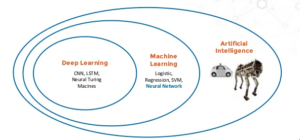 How AI is related to Machine Learning, Deep Learning, Robotics, and Predictive modelling:AI is bigger subject area that primarily concerns simulating human intelligence in diverse fields of business application/process. Machine Learning (ML) and Deep Learning: Both of these subject areas falls under the scope of AI. Conceptually, Machine learning is about predicting the future based on the past. For instance, we might wish to predict how much a user ‘Mrs. X.’ will like a movie that she hasn’t seen, based on her ratings of movies that she has seen in the past. This prediction could be based on many factors of the movies: their category (drama, documentary, etc.), the language, the director and actors, the production company, etc. In general, this means making informed guesses about some unobserved property of some object, based on observed properties of that object. ML is the technique to let program train the data model by reading and processing data. It deviates from rule based logic as we have in traditional application development. According to Tom Mitchell, computer program is said to learn if its performance of certain tasks, measured by computable score, improves with experience. Example: We use flash cards with the images of ‘Cat’, ‘Dogs’, ‘Car’ etc. to help child to identify and differentiate images. As child grows, observes social behavior, interactions, responses, actions etc., picks up and digests attributes such as shape, colors, size, weight, emotions, situation such as days to work, nights to sleep etc. and continues building the concept & cognitive ability. Similarly, computer programs learn the attributes and weigthtage (importance) by reading data (such as Image, audio, price of a piece of land with certain attributes – near school, hospital nearby, mid of town etc.) and establishes pattern. This pattern is nothing but a data model that gets further refined as more new type of example sets in. The same model can be used to response or classify the new example in the real world. For example, Real Estate data model predicts the price of a land, customer segmentation data model classifies a new customer as “high valued buyer” vs “moderate buyer”, stock price prediction and there are numerous such applications. I don’t intend to go in depth of ML at this point of time; However, I would touch upon steps to learn the same at the end of this article. ML product primarily gives us “Recommender”,”Classifier”,”Predictor” system for real world application. This is a vast subject that explains technique relative to supervised, unsupervised, linear, nonlinear complex learning model, feature engineering and tuning parameters. Statistics unravels the hidden characteristics of the data that helps in selecting appropriate algorithm to train data and build such systems. ML algorithms such as random forests, neural network etc. uses complex linear algebra (arrays, matrix, cross and dot computations) to fit the model. learn the we usually represent using linear algebra (array, matrix computation). There are tons of algorithms developed so far (KNN, Random forest, Decision tree, Support Vector Machine, Ensemble, Neuron network, logistic & linear regression etc. are some of these). ML work flow implementation involves five components: Data Preparation, Model Building, Evaluation, Optimization and orchestration the workflow implementation to predict real data in production set up.
How AI is related to Machine Learning, Deep Learning, Robotics, and Predictive modelling:AI is bigger subject area that primarily concerns simulating human intelligence in diverse fields of business application/process. Machine Learning (ML) and Deep Learning: Both of these subject areas falls under the scope of AI. Conceptually, Machine learning is about predicting the future based on the past. For instance, we might wish to predict how much a user ‘Mrs. X.’ will like a movie that she hasn’t seen, based on her ratings of movies that she has seen in the past. This prediction could be based on many factors of the movies: their category (drama, documentary, etc.), the language, the director and actors, the production company, etc. In general, this means making informed guesses about some unobserved property of some object, based on observed properties of that object. ML is the technique to let program train the data model by reading and processing data. It deviates from rule based logic as we have in traditional application development. According to Tom Mitchell, computer program is said to learn if its performance of certain tasks, measured by computable score, improves with experience. Example: We use flash cards with the images of ‘Cat’, ‘Dogs’, ‘Car’ etc. to help child to identify and differentiate images. As child grows, observes social behavior, interactions, responses, actions etc., picks up and digests attributes such as shape, colors, size, weight, emotions, situation such as days to work, nights to sleep etc. and continues building the concept & cognitive ability. Similarly, computer programs learn the attributes and weigthtage (importance) by reading data (such as Image, audio, price of a piece of land with certain attributes – near school, hospital nearby, mid of town etc.) and establishes pattern. This pattern is nothing but a data model that gets further refined as more new type of example sets in. The same model can be used to response or classify the new example in the real world. For example, Real Estate data model predicts the price of a land, customer segmentation data model classifies a new customer as “high valued buyer” vs “moderate buyer”, stock price prediction and there are numerous such applications. I don’t intend to go in depth of ML at this point of time; However, I would touch upon steps to learn the same at the end of this article. ML product primarily gives us “Recommender”,”Classifier”,”Predictor” system for real world application. This is a vast subject that explains technique relative to supervised, unsupervised, linear, nonlinear complex learning model, feature engineering and tuning parameters. Statistics unravels the hidden characteristics of the data that helps in selecting appropriate algorithm to train data and build such systems. ML algorithms such as random forests, neural network etc. uses complex linear algebra (arrays, matrix, cross and dot computations) to fit the model. learn the we usually represent using linear algebra (array, matrix computation). There are tons of algorithms developed so far (KNN, Random forest, Decision tree, Support Vector Machine, Ensemble, Neuron network, logistic & linear regression etc. are some of these). ML work flow implementation involves five components: Data Preparation, Model Building, Evaluation, Optimization and orchestration the workflow implementation to predict real data in production set up.
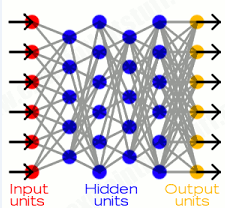 Deep learning is the subset of Machine Learning. As name speaks, this approach involves layered approach to dig deep enough to unravel hidden information. Such as, image processing, driverless vehicle, NLP (Natural Language processing) and many more. ANN (Artificial Neuron Network) is one of such models that involves multiple layers (input, hidden, output) to render output. In the simplest term, each layer uncovers information while processing input data through various nodes and passes the output to the next layer, which subsequently does the same before passing output to the next layer and so on. While doing so the algorithm is trained with tons of data (millions/trillions of records) with greater accuracy to predict classes such as image is of ‘Cat’ vs. ‘Dog’ , driverless car should ‘decelerate’, ’accelerate’, ’stop’, ’turn left’, ’turn right’ etc. Application of ANN is abundant across all sphere of life. UBER, the cab aggregator has been collecting millions of records comprising of driving details could be an excellent source for training data for Auto drive vehicle model.
Deep learning is the subset of Machine Learning. As name speaks, this approach involves layered approach to dig deep enough to unravel hidden information. Such as, image processing, driverless vehicle, NLP (Natural Language processing) and many more. ANN (Artificial Neuron Network) is one of such models that involves multiple layers (input, hidden, output) to render output. In the simplest term, each layer uncovers information while processing input data through various nodes and passes the output to the next layer, which subsequently does the same before passing output to the next layer and so on. While doing so the algorithm is trained with tons of data (millions/trillions of records) with greater accuracy to predict classes such as image is of ‘Cat’ vs. ‘Dog’ , driverless car should ‘decelerate’, ’accelerate’, ’stop’, ’turn left’, ’turn right’ etc. Application of ANN is abundant across all sphere of life. UBER, the cab aggregator has been collecting millions of records comprising of driving details could be an excellent source for training data for Auto drive vehicle model.
Benefits & Impact in business Area: Most businesses are in the initial stage of adoption of AI / ML system, but business is catching up quite fast either as a standalone AI project or digital transformation program.
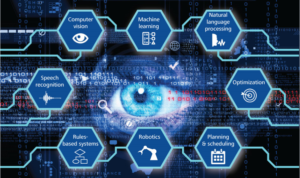 Travel: Travel aggregating applications such as Expedia, makemytrip, IRCTC etc. gets tons of user requests, preferences of travel such as days, time, type of travel (Business vs pleasure), no. of people, round trip option and many more can build application leveraging ML algorithm and segment or profile users and give instant results along with user related information while curtailing down irrelevant steps. The set up can further be enhanced with NLP interface and give overall elegant user experience. Expedia has already one BFS system as AI product that is helping to increase user base and reduce the cost.
Travel: Travel aggregating applications such as Expedia, makemytrip, IRCTC etc. gets tons of user requests, preferences of travel such as days, time, type of travel (Business vs pleasure), no. of people, round trip option and many more can build application leveraging ML algorithm and segment or profile users and give instant results along with user related information while curtailing down irrelevant steps. The set up can further be enhanced with NLP interface and give overall elegant user experience. Expedia has already one BFS system as AI product that is helping to increase user base and reduce the cost.
BFSI: Digital Financial Assistance can be developed by profiling customers by tracking users’ habits, activities, financial transactions and behavioral characteristics. Robo Advisor/Wealth Management Advisory: An AI product that has been trained on data specific to one’s transactions and configured with his/her short to long term financial requirement, can be a personal financial advisor equipped with proper integration with real time financial monitoring system (such as stock market, banking product rates etc.). Automate Underwriter (UW) process: AI product can process, categorize and price risk products automatically based upon individual application and related data ingested from Telco, tweets, web etc. RISK Mitigation in Insurance industry can be further enhanced with the application of Telematics, which collects incredible amount of valuable data that ML algorithm processes and categorize drivers into various RISK segments for appropriate risk pricing and alerting purpose. Auto Desk – Self-service robotized model in any banking institution is a great example of AI that can process loan, credit or any basic type of requests. DSS in the bank is helping top management with more data driven information for better decision.
Medical: AI helps in mining medical record within minutes, medical DSS recommends treatment such as what is needed for “Mrs. X” for healthy life right from food habit to medicine to life style (By ingesting her complete profile in the DSS). Some pharmaceutical industries are into genetic data-collection initiative to build DSS and answer query such as what make people healthy, Disease monitoring technologies – digital contact lense, glucose level, heart Beat rate etc.
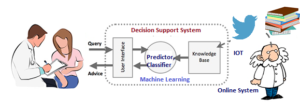 Summary: AI applications in industry are growing very rapidly. Its implementation in one industry is impacting others. Industries and Educational institutions are putting tremendous amount of time, money and energy in developing newer models, algorithms, AI products by nurturing data scientist, statisticians, data engineers while taking help from free software, public available data, cheap cloud platform and growing practitioners and community (Stack overflow, kaggle etc.). Industries should embrace AI as a new P&L business unit, chalk out strategy to strengthen this, allow engineers or business team to ideate and experiment in the sandbox, allow them to fail fast and apply the positive outcome in the digital transformation otherwise they will be stamped out of the race. At the same time, Beginners should not jump the gun by starting to run algorithm from available library (Scikit-learn, Spark ML) but begin with basic of 1. Statistics (ex. ISLR by Hastie and Trevor) 2. Machine Learning concepts and approach to build algorithm (Coursera) 3. Data wrangling/munging skill with R or Python followed by deep dive into various algorithms, workflow orchestration and specializations. AI/ML learning should be approached as long term goal while simultaneously business should start looking for implementation from established players. Though this topic is quite vast and I hope to have outlined the merits, concepts, advantages and application of Artificial Intelligence to the core of digital transformation.
Summary: AI applications in industry are growing very rapidly. Its implementation in one industry is impacting others. Industries and Educational institutions are putting tremendous amount of time, money and energy in developing newer models, algorithms, AI products by nurturing data scientist, statisticians, data engineers while taking help from free software, public available data, cheap cloud platform and growing practitioners and community (Stack overflow, kaggle etc.). Industries should embrace AI as a new P&L business unit, chalk out strategy to strengthen this, allow engineers or business team to ideate and experiment in the sandbox, allow them to fail fast and apply the positive outcome in the digital transformation otherwise they will be stamped out of the race. At the same time, Beginners should not jump the gun by starting to run algorithm from available library (Scikit-learn, Spark ML) but begin with basic of 1. Statistics (ex. ISLR by Hastie and Trevor) 2. Machine Learning concepts and approach to build algorithm (Coursera) 3. Data wrangling/munging skill with R or Python followed by deep dive into various algorithms, workflow orchestration and specializations. AI/ML learning should be approached as long term goal while simultaneously business should start looking for implementation from established players. Though this topic is quite vast and I hope to have outlined the merits, concepts, advantages and application of Artificial Intelligence to the core of digital transformation.